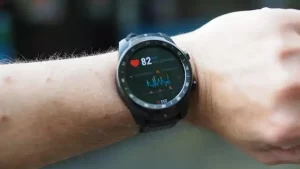How does the mRNA vaccine activate immune cells?
- Statins Lower Blood Lipids: How Long is a Course?
- Warning: Smartwatch Blood Sugar Measurement Deemed Dangerous
- Mifepristone: A Safe and Effective Abortion Option Amidst Controversy
- Asbestos Detected in Buildings Damaged in Ukraine: Analyzed by Japanese Company
- New Ocrevus Subcutaneous Injection Therapy Shows Promising Results in Multiple Sclerosis Treatmen
- Dutch Man Infected with COVID-19 for 613 Days Dies: Accumulating Over 50 Virus Mutations
How does the mRNA vaccine activate immune cells?
- Red Yeast Rice Scare Grips Japan: Over 114 Hospitalized and 5 Deaths
- Long COVID Brain Fog: Blood-Brain Barrier Damage and Persistent Inflammation
- FDA has mandated a top-level black box warning for all marketed CAR-T therapies
- Can people with high blood pressure eat peanuts?
- What is the difference between dopamine and dobutamine?
- How long can the patient live after heart stent surgery?
How does the mRNA vaccine activate immune cells?
How mRNA vaccines transfect cells, express antigens, and activate immune cells.
mRNA transfected cells
Three types of cells transfected by mRNA vaccine in vivo:
- Transfection of somatic cells such as muscle cells and epidermal cells
- Transfection of Tissue-Resident Immune Cells at the Injection Site
- Transfection of secondary lymphoid tissue (lymph nodes and spleen) immune cells

Transfection and injection of local non-immune cells
Intradermal, intramuscular, and subcutaneous mRNA vaccines can transfect non-immune cells near the injection site.
Antigens are produced by non-immune cells, which are subsequently degraded in the proteasome.
The degraded epitopes form complexes with MHC-I molecules, present antigens to cytotoxic T cells expressing CD8+, and activate immunity.
Transfection of myocytes can also activate dendritic cells, which then lead to CD8+ T cell priming. Although the exact mechanism is unknown, it is thought that the antigen is transferred from muscle cells to dendritic cells.
Transfected immune cells
mRNA vaccines can also transfect tissue-resident immune cells, primarily APCs (such as dendritic cells and macrophages). In vitro injection of mRNA vaccines triggers a local immune response at the injection site, recruiting immune cells to the area and promoting transfected tissue-resident immune cells.
As in the first case, transfection of mRNA into these cells resulted in antigen presentation on MHC class I cells, resulting in activation of CD8+ T cells.
APCs can process antigens through the MHC class II pathway, resulting in the activation of helper cells expressing CD4+.
However, priming CD4+ T cells is also critical for building robust cellular immunity.
Furthermore, given the role of T helper cells in B cell priming, the ability of mRNA vaccines to prime CD4+ T cells contributes to humoral immunity.
Transfection of immune cells of secondary lymphoid organs
mRNA vaccines can also be lymphatic drainage and transport through the lymphatic system to adjacent lymph nodes.
Lymph nodes are where various immune cells, including monocytes and naive T and B cells, reside, and antigens located in these secondary lymphoid organs initiate adaptive immune responses.
In lymph nodes, mRNA vaccines transfect resident cells such as APCs and endothelial cells. Transfection of these cells not only primes T cells, but also B cell responses.
Mechanisms of mRNA Vaccines Inducing Adaptive Immune Responses

1. Endocytosis-mediated internalization, mRNA escapes from endosomes into the cytoplasm (probable mechanism see below), and ribosome translation produces antigenic proteins.
2. The antigenic protein is degraded into fragments in the proteasome, and then presented by MHC-I.
3. Antigenic proteins can undergo lysosomal degradation through various mechanisms such as autophagy and signal peptides, and then be presented by MHC-II.
4. The antigenic protein can be expressed extracellularly in a secreted or membrane-anchored form.
5. The antigens expressed extracellularly can be taken up by APCs again and degraded by lysosomes.
6. In contrast, extracellular antigens can be recognized by B cell receptors on B cells, leading to B cell maturation.
7. MHC-I presents CD8+ T cell epitopes
8. MHC-II presents CD4+ T cell epitopes
Hypothetical mechanism of nanocarrier endosome escape

1. Nanocarriers can induce destabilization of endosome membranes to enable cytoplasmic release of genetic material
2. Nanocarriers, especially polymers, can scavenge protons and become cations in the acidic cavity of the inner body cavity, leading to more influx of protons and counterions. This osmotic gradient induces the influx of water into the endosome, leading to the rupture of the endosome.
3. Nanocarriers swell in acidic pH due to electrostatic repulsion and physically rupture endosomes.
References
1.Jeonghwan Kim et al,Self-assembled mRNA vaccines,Advanced Drug Delivery Reviews 170 (2021) 83–112
2.G. Lindgren, S. Ols, F. Liang, E.A. Thompson, A. Lin, F. Hellgren, K. Bahl, S. John, O. Yuzhakov, K.J. Hassett, L.A. Brito, H. Salter, G. Ciaramella, K. Loré, Induction of robust B cell responses after influenza mRNA vaccination is accompanied by circulating hemagglutinin-specific ICOS+ PD-1+ CXCR3+ T follicular helper cells, Front. Immunol. 8 (2017) 1539
3.N. Pardi, M.J. Hogan, M.S. Naradikian, K. Parkhouse, D.W. Cain, L. Jones, M.A. Moody, H.P. Verkerke, A. Myles, E. Willis, C.C. LaBranche, D.C. Montefiori, J.L. Lobby, K.O. Saunders, H.-X. Liao, B.T. Korber, L.L. Sutherland, R.M. Scearce, P.T. Hraber, I. Tombácz, H. Muramatsu, H. Ni, D.A. Balikov, C. Li, B.L. Mui, Y.K. Tam, F. Krammer, K. Karikó, P. Polacino, L.C. Eisenlohr, T.D. Madden, M.J. Hope, M.G. Lewis, K.K. Lee, L. Hu, S.E. Hensley, M.P. Cancro, B.F. Haynes, D. Weissman, Nucleoside-modified mRNA vaccines induce potent T follicular helper and germinal center B cell responses, J. Exp. Med. 215 (2018) 1571–158
4.N.L. Trevaskis, L.M. Kaminskas, C.J.H. Porter, From sewer to saviour — targeting the lymphatic system to promote drug exposure and activity, Nat. Rev. Drug Discov. 14 (2015) 781–803
https://lh3.googleusercontent.com/ueBOcWWctCfiXuu482ER11zQ1RQ6xX6GMdyjMLpsIdaMOabZOXC84J9gS_1MPBNAbPWHzEVhtGoNPK7WNfCv9CmThqeMLfcu6xKI6v4
(source:internet, reference only)
Disclaimer of medicaltrend.org
Important Note: The information provided is for informational purposes only and should not be considered as medical advice.



